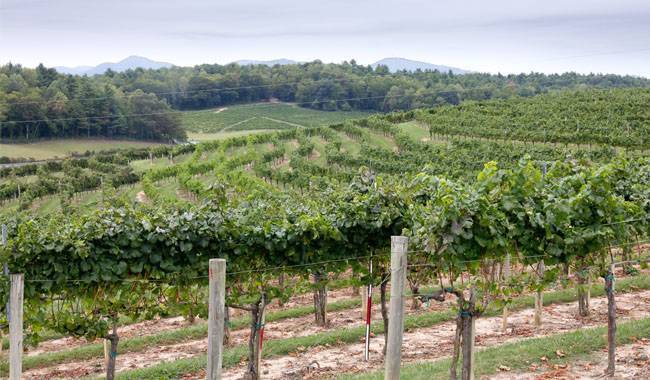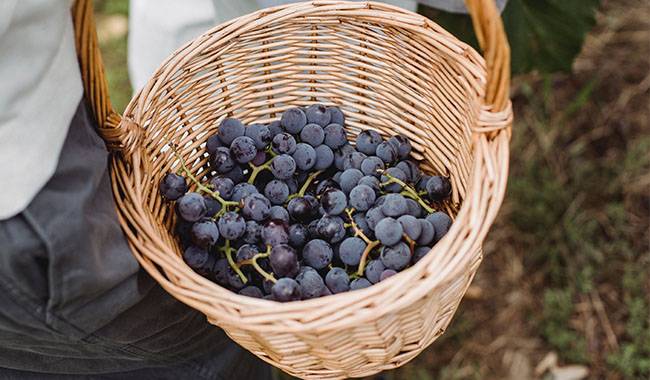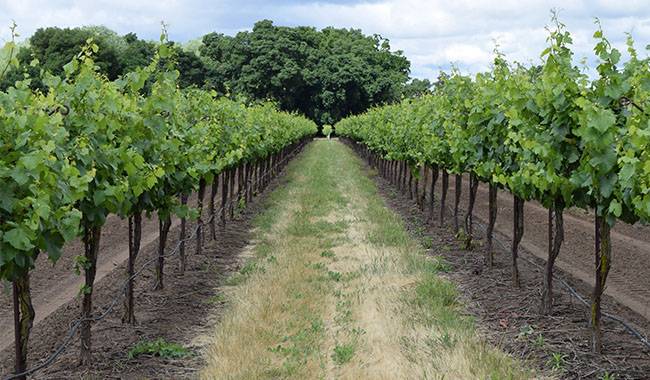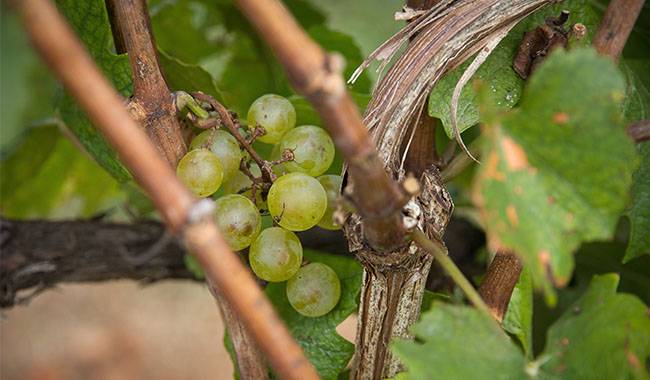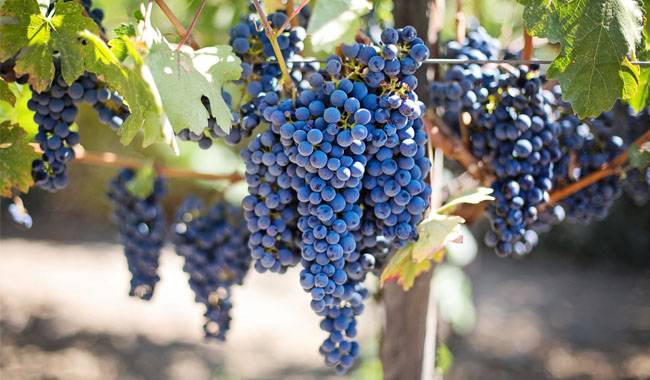
How to take care of a grapevine in winter? First, let’s hear the story of the vine.
Since ancient times, the grape has accompanied a person, quenching thirst, refueling the soul, and healing the body.
Since the end of the 16th century, the vine has been cultivated and successful in various regions.
The success was short-lived, as it managed to keep its roots under high freezing temperatures (in the snow) during some snowy winters, and in the spring it formed clumps on the ground and harvested.
As time passed, it became clear that for the situation at that time, grape varieties with specific properties were needed: increased resistance of the root system to negative temperatures, and improved resistance of the vines to winter frosts.
To avoid losses, it is necessary to cover the vineyards, especially table grapes, during the winter, and this must be done correctly. As explained in today’s article.
PREPARING GRAPES FOR THE COLD OF WINTER
The varieties developed for the central and northern regions of the United States have helped them to develop northward, and today, grapes are highly productive in many regions.
However, the genetic memory of past grapes still requires growing conditions close to those of viticultural origin: the required heat temperature, adequate lighting, and avoidance of late fall and winter cold.
Temperature variations usually cause immature vines and young plants to grow and die.
Experienced grape growers have in their home arsenal a variety of winter mulching equipment: spunbond, burlap, mats, straw, nets, wooden shelves, boards, etc.
Different types of shelters are used in summer cottages and house plots to protect the vineyards, depending on the area under cultivation, the duration of cold weather, the snowpack, and the weather conditions in spring and autumn.
Vineyard bushes need to be prepared for shelter. Otherwise, rodents can bite the roots and vines, mildew and other fungal diseases can appear on improperly covered lashes, eyes can die, etc.
In order to properly prepare your bushes for overwintering, you must perform the following preparations.
- Water the vine bushes during the dry autumn months.
- In September, the vines should be fertilized – potassium or phosphorus-potassium fertilizer.
- After the leaves fall off, prune the immature vines. It has a green or greenish color. Immature vines always freeze in winter.
- In addition to sanitary pruning of immature vine buds, it is necessary to increase the load so that the normal buds are 2-3 buds higher to control the spring.
- Treat the vine bushes with a 3% solution of copper sulfate or iron sulfate and other medication solutions used for pests and diseases.
- Prepare the above-ground part of the vine for shelter. Remove from the wire and tie the buds into loose bundles.
- Prepare trenches (if the technology is provided) to lay the vines for shelter.
- Prepare the mulching material.
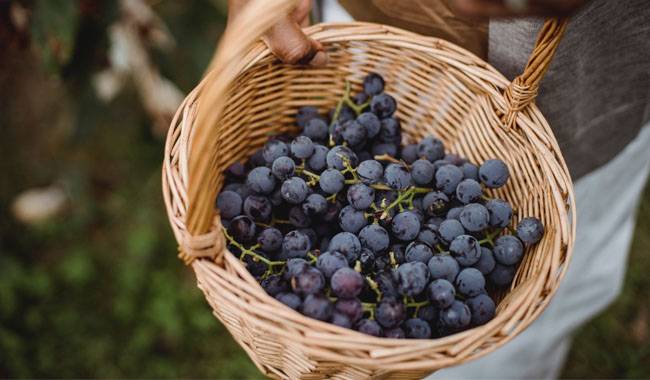
DISINFECTION OF THE MULCHING MATERIAL
- After removing the shelter in spring, the spunbond material, coarse linen, used to cover the grapes must be dried, cleaned, and treated with a working solution of antifungal medication. Gently fold until autumn, then settle in a dry place.
- Wooden floors, roofing materials, straw, and reed mats should also be carefully treated with a 5-7% solution of copper sulfate or other compounds to prevent pests and diseases. Fold neatly under the canopy.
- In autumn, before the grape shed, please check all prepared materials. Throw away and destroy the rotten ones.
- Before autumn, prepare missing mulch reeds or straw mats, straw, fallen leaves, branches of coniferous spruce. Dry the fallen leaves and treat them with fungal disease and pest preparations.
- Prepare and dry bales of insecticidal herbs from pests, including rodents (aster, mugwort, marigold, marigold, and others). Leaves, straw, and mats can be removed with insecticidal herb stems. You can sprinkle dust or transfer it with toxic bait of rodents and other pests.
TYPES OF GRAPE SHELTERS
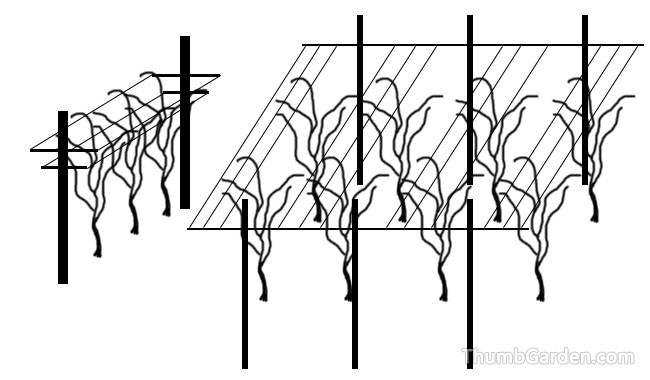
Grapevine shelters can be divided into several types.
Standard drops regarding grapes.
- half vine shelters
- In the cold season, the vines are completely covered.
- regardless of the region, 1-2-year-old seedlings, European varieties, unstable in extreme temperatures, hybrid forms, needing shelter.
About the standard drop of grapes
In the south, the grape shelter begins in mid-November. After preparing and taking all the necessary measures to prepare the above-ground material for the winter, the grape roots are protected.
Since the roots of the grapes begin to freeze at -5°C (23°F) to -7°C (19.4°F), the first frost is within 0°C (32°F) to -4°C (24.8°F) and mounds form around the stems.
To approach the standard shelter for the grapes, they use the land on the aisle.
Ground cover was carried out in order to completely cover the heads of the grape bushes and the lower part of the trunks. Mounds of at least 30 cm (11.8inch) in diameter and 10-25 cm (3.93-9.84inch) in height were formed (with emphasis on the age of the bush and root system).
Ripe grape varieties are frost resistant and can withstand frosts down to -15°C (5°F). After covering the root system, the vines are simply removed from their supports and placed on lower wires or laid through bedding material (boards, plywood) on the ground.
If the frost does not exceed -15°С (5°F), no further covering work will be carried out. If the temperature decreases further, then the covering work must be carried out immediately.
HALF-COVERED GRAPES
In some southern regions and in central Russia, semi-bush is used to protect against frost. It is distinguished by the fact that only the part of the bush closest to the soil is protected from frost.
Considering that the cold accumulates on the surface, the heads of buds, lower arms, and roots are covered by vine bushes.
The higher parts of the plant are protected with mulching material, wrapping them with protective clothing made of straw, spunbond, and old blankets.
The protective layer should be at least 4cm (1.57inch), reinforced with twine to prevent the wind from breaking the wrapping paper. All work is carefully checked to avoid breaking the kidneys.
You can cover the grape blocks on the ground in another way. Make some shallow furrows in the side of the bush. Bend the removed lash to the ground, fix it down and sprinkle it with soil. Shooting arcs may remain above the ground.
They remain open or covered by various materials. Use mats, old blankets, blankets, spunbond or agricultural fibers. Cover carefully so as not to break the kidneys.
Pull the film over the cover, secure it with willow arc or twine, and sprinkle soil around the edges. Leave vents at the bottom so that the grape bushes do not become moldy during the warm fall temperature drop.
Young vine bushes with mature vines can simply be placed in shallow trenches dug out and sprinkled with a 10-15 cm (3.93-5.9inch) layer of soil. To avoid water accumulation in the row spacing grooves, where the soil is backfilled, it must be dugout.
Low grape bushes can be tied neatly in bunches and wrapped with insulation. You will get the bushes winterized.
Over winter, young grape seedlings are covered with bottles. It is easiest to use 3-5 liter clear bottles. Cut off the bottom and drive the bottom of the bottle into the ground. Loosen the plug. The bottles are covered with soil on all sides.
FULL GRAPE COVERAGE
In winter, in areas where the temperature drops below -20°C (-4°F), the vines should be completely covered. After completing all the preparations, cover the head of the bush with soil.
Remove the grapes from the grids, carefully tie them into loose bundles and place them on prepared bedding made of slabs, boards, and plywood. They act as an insulation between the vine and the ground. The vines must be isolated from the ground.
They are fixed to the ground in an arc so that the bound vines do not tower above the ground.
The ground part of the plant is covered with pre-prepared mulching materials: burlap, blankets, reeds, straw mats. The covering material must be natural; man-made materials do not keep warm. Rattan may die. Carefully tuck in the shelter.
Pull the insulating film from above and secure it with curved brackets or U-shaped structures. Spread soil on the end of the film and make sure the film does not come in contact with the kidneys. Always leave a gap so that the vines do not become old.
Some growers nail prepared vines to the soil with arcs and cover them with a 15-30cm (5.9-11.8inch) layer of soil, which they also throw in the snow when it falls.
If it was not possible to remove the vines from the lattice or other high supports, the vines were wrapped and fixed to the supports.
In this case, the root system is protected separately, but with care. A small hill is dumped, covering the head, lower sleeve, and stem, which is covered with branches of spruce and tied with twine.
Throw snow and make sure he wears a cap covering the branches of spruce. Do not leave exposed, otherwise, the vines may freeze.
In colder areas with longer frosts, the house or box will be covered with branches or wooden shields of spruce, covered with dry leaves or straw. The top is covered with straw mats, straw mats, and stone or thick wooden boards. In spring, the structure is removed and the bushings are released.
It makes more sense to cover young or small grape bushes with this structure. You can also build a shelter for vines picked from the lattice (bundled in bunches).
When covering shelters with leaves or straw, and for any other type of shelter, be sure to spread poisonous rodent bait at the base of the trunk and pack it with the stems of insecticidal plants moving around. Rodents will not come to such a house.
SPRING GRAPE GROWING
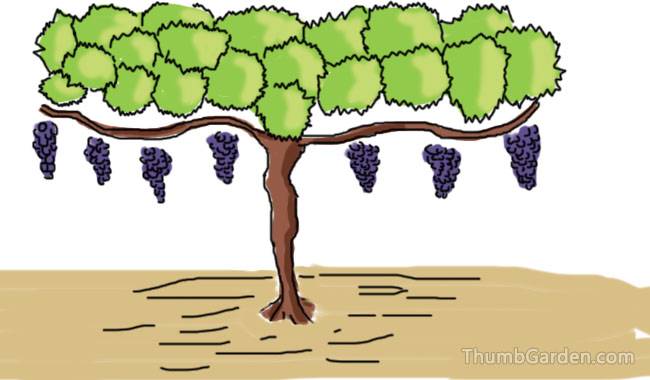
They start planting grapes in the third decade of April – early May. After the beginning of steady warming, you need to remove the film to avoid the formation of condensation, which can destroy the swollen buds.
When the first buds appear, the entire shelter of the grapes will be removed. It is best to remove the shelters in the evening or in cloudy weather so that the young shoots and buds do not get sunburned.
The entire package is collected, burned or moved between rows and covered with soil. The mulch will decay and be used as organic fertilizer.
As stable positive temperatures begin to appear, they are raked away from the ground, releasing the roots of the stalks, under the sleeve, and raising the vines on supports.
During the same period, the condition of the vines was monitored. The soil was fluffed with a rake to allow oxygen to flow to the roots. If the bush is covered only with roofing material or film and covered with snow, the snow is tilted, leaving only a permanent shelter.
On warm days, the film or roofing material can be removed, dried, and covered again at night until a constant positive temperature is established.
Preserving grapes while growing in cold areas requires labor and effort. Therefore, in summer farmhouses, it is best to grow varieties that do not require complex protective structures and that do not need shade or are cold-tolerant only with root protection.




